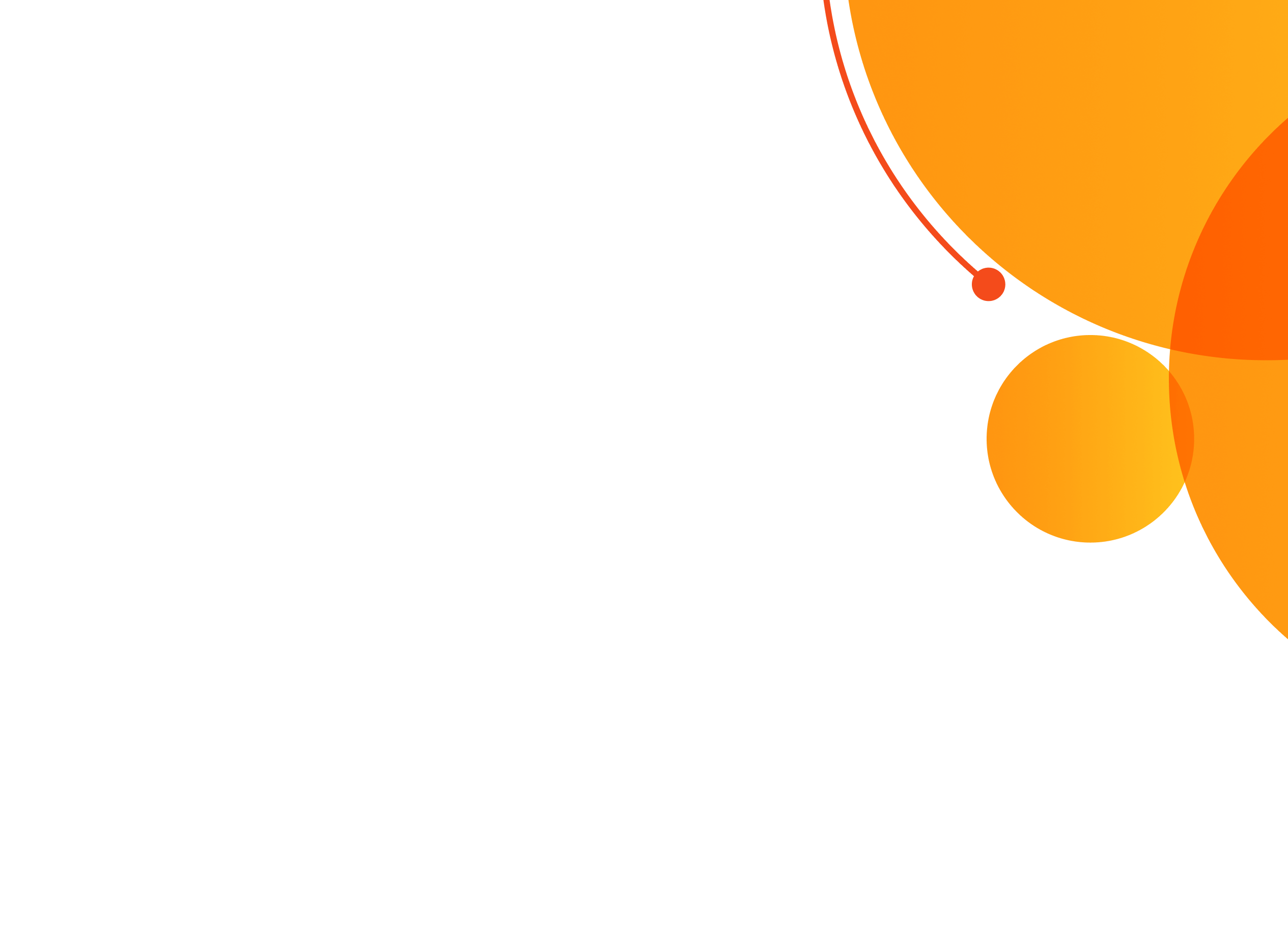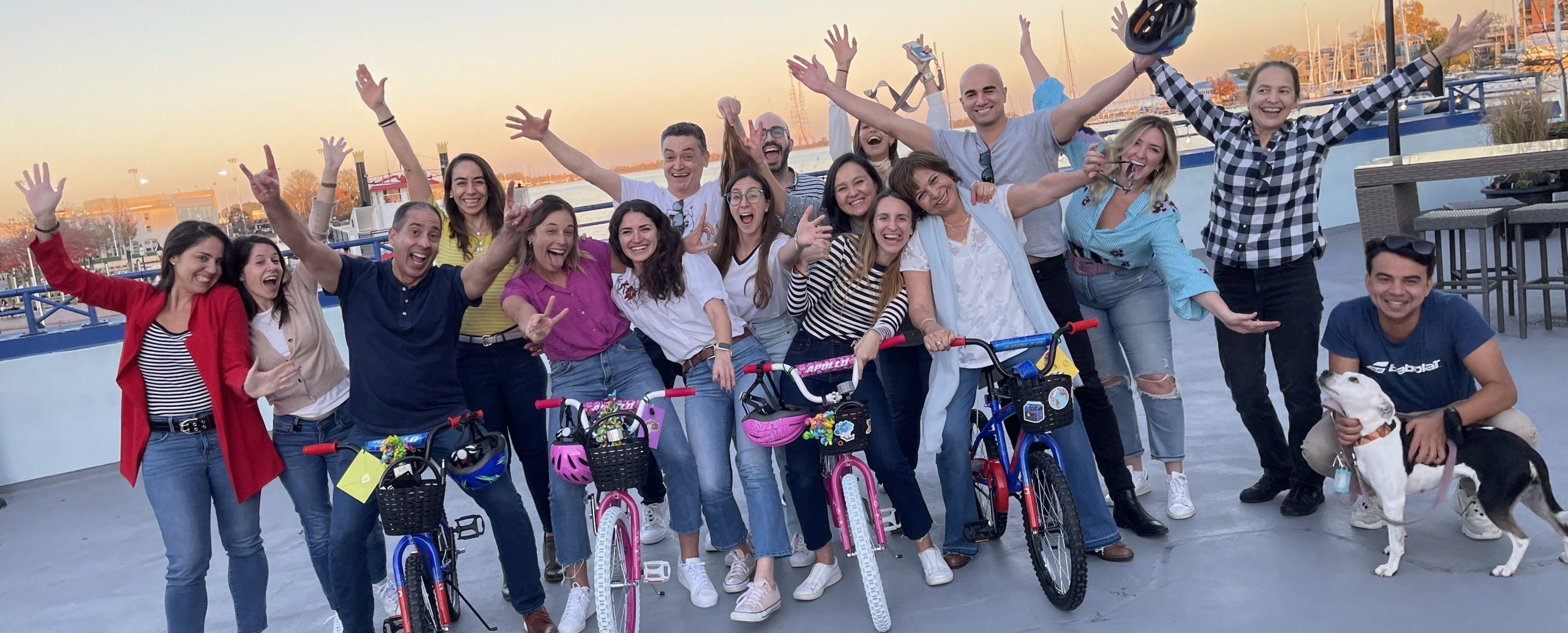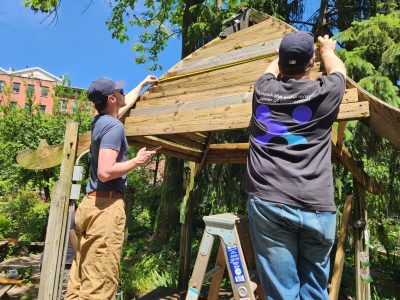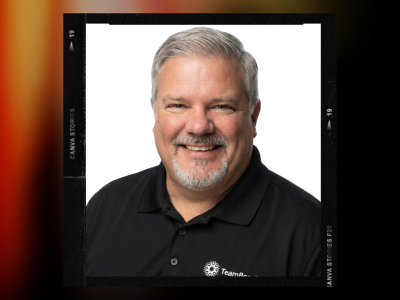STRONG TEAMS DON’T HAPPEN BY CHANCE 
From Good to Great: How to Build a High Performing Team
w/ Lia Garvin

Use the buttons above to listen now.
Transcript - From Good to Great: How to Build a High Performing Team
Rich: On this episode of Team Building saves the World.
Lia: People have gotten time back. Yeah. And you know, th this is something you can’t, you can’t replace with money. Time. While I’m here, I am a part of this. My role is critical in the success of whatever the company’s vision is. You know, we’re not gonna wear jeans on Friday till you wear jeans,
And I actually had to sort of do something outta my comfort zone. I have just predicted the future and win this week. It’ll be there. That’s gonna be in there and I’m here to help you. So reach out.
Rich: Hello team. It’s me, your old friend, Rich Rininsland host of team building saves the world, the show where I speak to the thought leaders from around the world discussing variable strategies and tools to help you and your team build a better work environment. And today we’re building a better team with organizational consultant best-selling author
and host of Managing Made Simple podcast, Lia Garvin. The first I need to share some love with the rest of my support at team bonding. If your team is ready to experience teamwork to the power of play, to visit team bonding.com to learn more now, team, join me in welcoming my guest author, the number one bestseller unstuck, reframing your thinking to free yourself of the patterns and people that hold you back.
Lia Garvin. Hello, Lia! Hello. Hi, everyone’s so excited to see you here. Thank you so much for coming on board with us. How you doing today?
Lia: I’m doing great. I love the music. I gotta introduce that on my show. . , so it gets you in the zone. Love it.
Rich: Feel free, steal whatever you like. It’s fine. . So let’s start off fast.
We have a lot to talk about today and I want to get right into it. First off, just for my team out there who have not had an opportunity to meet you, Tell them a little bit about yourself, how you got started in this, and what made you decide building excellence in teams was your career path. .
Lia: Yes. So I spent over a decade in the corporate world, much of that time in big tech working as a team operations leader.
So my job was about building processes and tools to help people get their work done.
Rich: Nice.
Lia: And I found pretty early on that, well, people get their work done a lot more easily when they are feeling supported, when they have, when they communicate with each other, when they feel included. And I would say earlier in my career, I would bring this sort of people focus up quite a bit.
And it wasn’t always recognized. I was often told focus on the work stuff first and then the people stuff later, and. , I knew that wasn’t a real thing. I knew that you had to focus on this people stuff first, . So I kept building this into the way that I drove team operations and making sure people had an opportunity to share their perspectives.
And were communicating with each other. We’re creating forms for different kinds of roles to be meeting and and sharing work. And as I did this, I started to see, oh wow. Yes, this is the secret to getting work done more effectively, uh, better quality and having people feel motivated and engaged. This is what I did across a number of roles.
And about eight months ago I said, you know, I wanna, I wanna take this on the road. I wanna do this at scale. So I launched my own business as an organizational effectiveness consultant, and I’m doing, uh, team, team effectiveness work, manager development, employee engagement, retaining women workshops and programs for companies big and small.
Rich: fantastic. But how do we even define what a high performance team is and what’s the difference between Yeah, that and what might be construed as a, as a, I don’t wanna say average, or, or, or poor.
Lia: I think there’s a couple qualities that stand out on high performing teams, and first is a sense of ownership.
And I’ve noticed when teams have a sense of ownership, they’re proactive when problems come up, they’re, they’re not pointing fingers, they’re not looking for someone else to solve things. Now, this doesn’t mean they don’t ask for help or have challenges they wrestle with, but it’s the mindset that they approach challenges with.
So I think it’s that, you know, the growth mindset that we can figure this out together, that theres no problem we can’t solve. Hmm. But the, the ownership mindset puts them in the driver’s seat of that. And it’s certainly that ownership mindset makes it easier to manage a team like that , because the, you, you know, you find, hey people, when they come to you with a challenge, they’re also coming with ideas and solutions, right?
That they want feedback around as opposed to, Hey manager, this thing’s broken. Fix it for me. I’ll be waiting over here on the sidelines. So the ownership mindsets first. I think the second one is psychological safety, and this is that safety and comfort in taking risks, making mistakes, being vulnerable.
Rich: Mm-hmm.
Lia: without, and knowing that it won’t be held against you. So that’s the safety part. And this is something that’s long been studied. It was studied famously by Amy Edmondson and uh, by Google as they studied the secret sauce to high performing teams, I think in 2014 and 2015. And they found that beyond things like tenure and technical expertise, even co-location, big topic right now.
Rich: Yeah.
Lia: What was most important? What was the differentiator between low performing and high performing was psychological safety, and it was surprising, I think, especially in a company that really valued that technical expertise, kind of the most of, of all things to find this out. And fortunately, this thinking has really become more popularized and, and more understood around companies of really the foundation of building a great team.
Rich: well, what did it look like before? If we are just now determining that psychological safety is valuable, which I don’t know why we’re doing it just now, but what, what happened to make that change, to make that noticeable?
Lia: Yeah, I think, you know, I think there’s more of an awareness now and companies, I don’t, I don’t think there was an overnight shift.
I mean, I wish there were , I think, I think that’s where we’re really, I think the shift was that this became a part of the conversation.
Rich: Okay.
Lia: And, and, and, and through work of folks like Brene Brown and, and, and I mentioned Aban, Edmondson and others, that you could say, Hey, we do need to focus on the people that we do have to make it safe mistakes that we can’t lead, just through fear and, and.
Sort of tops down, pushing and indem demanding, you know, results at all costs regardless of how people are being treated. So I think we’re still in the middle of that shift quite a bit. I think things like the pandemic where we open the door to having conversations more about flexibility, about wellbeing, about balance, this is probably speeding that along even more.
Where we, we understand that this is something that’s a non-negotiable now, but I do think before there was more of a belief that, you know, if you manage through fear primarily, or Yeah, purely offering, you know, f monetary rewards, that that would be the only thing that was needed. Right. And I think we’re understanding there’s more of the story now,
Rich: so how is it that we can measure these.
uh, by, by what metric do we determine high performance?
Lia: I think there’s a number of factors. Obviously retention on teams is one.
Rich: Sure.
Lia: People, you know, people start to leave when they don’t have that. But there are reasons people will stay in a job that’s not going pretty well. , especially if the economy’s like this.
Yeah. So beyond retention, uh, things like a lot of companies have employee engagement scores where they, where they collect feedback on an annual basis about how teams are doing and. Think a lot of companies ask specific questions around, is it safe to speak up and share a perspective that’s different than mine?
Or do I feel included in meetings? Do do I have support for my manager? So I think there’s, there’s opportunities to ask questions in surveys and measure. Mm-hmm. Um, performance year over year. I do a lot of work with teams on what to do with that survey data. So one of my big programs is around understanding these employee engagement surveys and how to actually not just take the results at face value, but to have, use that as an entry into having more conversations to understand.
So I think a qualitative analysis is another piece to really measure. And, and, and the work I do with teams, I have focus groups and, and look at, well, what kind of things am I hearing that maybe people didn’t say in the survey? that they’re really experiencing. Hmm. Um, so I think that’s another way. Also, some companies have performance review systems where folks give feedback about their managers.
That’s another place to get data where, you know, people are, are sharing what’s working, what’s not.
Rich: Is this usually seen as a management to employee? Not problem, but area of conflict.
Lia: I think a lot depends on the kind of company, the industry, the, the way incentives are structured. So I would say, I think a lot of this is still very new, industry wide.
It was, you know, psychological safety and manager development, things like that. That’s a conversation I’ve seen across big tech quite a bit. , but I think it is, I think it’s newer to many other industries, and I think all of us on the whole could do better at really understanding what motivates people and Yeah
and how to keep people engaged. And I think one of the biggest ways to motivate people is helping connect the dots between what their work’s about and how it connects to the bigger vision of the company of the. why it matters. Because right now a lot of folks are feeling like, do I even wanna be doing this job?
Right? Do what’s the point there? We’re feeling there’s so much uncertainty. There’s so much stress that a manager can play a huge role in saying, Hey, the work that you’re doing, this is so important to our team because, and that’s important to the bigger vision of the company because X, Y, Z, and without you, this thing wouldn’t be working as it could.
Or our customers wouldn’t receive this service that they need or people wouldn’t get this transformation. So when we can connect the dots, we really can start to improve motivation and engagement on teams.
Rich: How do you balance that along with a psychological safety issue?
Lia: Yeah.
Rich: How, basically what I’m asking is how can you build psychological safety while still telling people that they need to take risks in order to increase, you know, output for the company?
Lia: Yeah. Great question. Because I think that’s some of the pushback around, well, if I make it too safe. Right. And are people gonna sort of like pick the foot off the gas? Yeah. So this is such a great question because this is the condition for working more, for working harder is that we have to feel like. We don’t have to hide mistakes that we all know that mistakes are inevitable, and instead of hiding it and covering it up and having someone or 10 more people make that same mistake.
If you create a culture of learning where we say, Hey, after a, after a project, let’s do a postmortem and talk about what went wrong, what could go better, now we, we bring that into the next project and we can go a lot faster next. Another driver of psychological safety is having a premortem. So before a project even goes on, when the tensions are low, before things get going, saying what are the things that could go wrong?
Who’s on first, who’s on second? And and having accountability and ownership before something happens. And when you create that upfront, you’re allowing more voices into the conversation, which is fueling psychological safety. Because when the tensions are low, when there’s not, , we can be in this sort of iterative mindset where, okay, I can share some ideas.
We don’t, you know, I’m not saying I have the right or wrong answer. I’m just in this sort of collaborative brainstorm. So that’s a really great form to create for teams on what could go wrong or what ideas have we not considered? What’s something maybe we haven’t thought about where it’s sort of all ideas are acceptable in a moment of, again, before anything goes sideways.
Yeah. So that you’ve gotten opportunities for people to share their perspectives..
Rich: In what way? Say, as a manager, could I make sure I’m building the best team I can for this dynamic?
Lia: Yeah, I think one, so obviously, you know, diversity, equity inclusion’s a big piece of it. We wanna always be building teams that bring different perspectives to the equation, that have different professional experiences that that come from different walks of life, because this creates better outcomes.
And even if I think, you know, there’s. You can have an inclusive team that’s very homogenous. If everyone thinks the same way, they might all feel included. Mm-hmm. , but you’re gonna have less good results because we need different perspectives to actually fuel innovation and healthy debate. That’s that’s done respectfully and with trust and people saying, well wait, have we thought about this way?
Or, based on my experience, I know this willer won’t work. That is always going to create better outcomes for our customers, especially if we’re. You know, working on a company that’s supposed to serve more than just one identity group, which every product really should, then, then we really wanna be doing that.
And so I think first is the hiring, but the next thing of how, what a manager can really do specifically once they have a team, is to be modeling these different things. So I mentioned, you know, why would someone feel safe speaking about a mistake if the manager’s acting like they’ve got it all figured out and everything’s perfect.
So manager’s saying, Hey, here’s something that I wrestled with earlier in my career. Here’s a piece of feedback I’m working on. Here’s a place I’ve been getting stuck and here’s what I’m doing about it. Hmm. And, and by showing feedback is okay, it’s okay to not be perfect. You can set a high bar and you can say, we talk about these things, but we also know that they come up.
Do you have
Rich: any examples for me about modeling you have seen that has worked versus not?
Lia: In the early pandemic, a manager that I worked with had she set the, a really good stage of bringing us together. You know, a couple times a week we had sat in the office and now we went from every day to zero, right?
So she brought us to together every morning to have a quick 15, 10, 15 minute standup. And we said, how are we doing today? What do we need? Where are we getting stuck? and creating a forum where it didn’t just have to be like project updates where you’re at with everything, but we, it created more rapport, us hearing from each other, feeling more community, and she shared as well.
And that was the modeling piece of, of her saying, , I’m frustrated. I’m scared. I, I wanna have more answers. I don’t know what, what, when we’ll be back in the office together. I don’t know how long this pandemic will be. Remember in the beginning we thought it was a two week pandemic. better if you just stay home.
Me over . So helping people navigate that, and I think that was a really good, a small forum. I think you can do that on a team once a week, and it’s still very effective. You know, having, just getting people together to share how are we doing, what are we needing, and, and setting that stage as a manager by sharing first, and as a manager, you set the floor for the vulnerability.
So if you come on that call and you say, what’s top of mind for me this week, getting this project launched, landing the strategy document, and having this meeting, and where am I getting stuck? Getting responses to emails and getting the client approval, if that’s what you say, . Everyone’s like, oh, okay.
This is all business. . Now on the other side, if you say what’s top of mind this week? Top of mind, I’m having a lot going on with my family. My daughter is struggling with the, you know, her, her science things. I’m having to be pulled away a lot to help her in school, so, so I might be a little bit distracted this week and saying things like that.
Now I know, oh, okay, that’s where we’re going with this meeting and as a team member, I can show up now more authentically.
Rich: Can this still work remotely? Because we know there’s still people out there who are talking just like you and I,
every day.
Lia: Yeah, I do. I think it’s especially important for remote because I think, you know, in, in office maybe you casually chat at the, you know, coffee or water cooler or whatever.
There’s, there’s forums to have this sort of chit chat, small talk conversations. So I think this is a tool I’d actually recommend more so for a distributed team and where you can’t see folks every day than
Rich: what do we recommend for those remote folks? Yeah, I mean, how, how can we be sure that we’re still getting the same thing, that we’re still building the best dynamic we can?
Lia: It’s, it’s really important to be creating moments for casual conversation. Okay. When we’re remote and we’re, you know, we’re sitting in this room all day, right? Meeting, after a meeting, it can feel very transactional. You can feel like meetings are, you know, you are just there for that one conversation and you’re out.
So I think having things like multiple modes of communication, so maybe it’s a forum, like I talked about that 10 minute check-in, and then you have a group chat where you can talk a little bit more casually, socially. Maybe you’re using Slack, maybe you’re using other forums, but also to create, this is really important for, for remote teams.
What are the norms around communicating across those different forums? Because it can be overwhelming and you can be inundated with, I got emails and I got Slack and I have that. Yeah, instant messages and now I have this meeting. I didn’t want, you know, I have this virtual lunch and I’m just trying to get like two minutes to step away from my desk.
Right. , it’s important for, for a team working remotely or hybrid to talk about what are some of the norms we have around communication. For example, we use this group chat for this kind of conversation. It’s about jokes and memes and casual . We’re not gonna put, we’re not gonna put, you know, project status in there so that if someone says, Hey, I wanna mute that to have heads on work, they’re not missing something.
Or we say, Hey, we’re gonna have a virtual lunch. and in that conversation it’s no work talk so that if someone misses it, they don’t feel like actually this whole thing came up and I, I thought it was a lunch, but it was actually something else. So setting up norms around what communication happens across different forms is gonna be really important to, to help create some ease for people around where they can opt in or where they can opt out.
Rich: What things don’t work? Cuz you just said opting out. I mean, what kind of challenges does building this kind of team face? Because it sounds easy. And yet, and yet we still have people not doing it
Lia: and it’s not, I, I agree. I think a couple of challenges are val norms around video on and off. I think that’s a, there’s a lot of nuance there to what, you know, to, to requiring versus not.
I think a lot of people are still figuring out where their, what with their office space, things like that, but Right. I do think when. You know, when leading a meeting, leading conversation, it is important to, to the extent that you can, to be on video, to be having that face-to-face communication. I think that’s something a lot of teams struggle with.
Mm. Um, that, and then I think that can create tensions across the team where it, you know, there’s, there’s perceptions or biases. If you don’t see someone that they’re not really around now, even if that’s not the case and you have a situation where, You can’t be on video, I would say to talk with your manager about it and say, Hey, here’s the situation I’m going through.
It’s not that I’m on vacation and secretly dialing in, which is like , what some people might assume. So I think if you have situations where you’re not there, it’s, that’s totally okay. It’s to have the conversation upfront. So that’s one thing that I think the other one on the flip side. , return to office.
It’s, it’s a really big challenge across so many different environments. Right. You know, there was, there’s many mandates around returning full-time versus four versus three days. And I think across the board people are seeing very, very low, like relativity to doing that. Mm-hmm. , maybe PO folks are coming in once a week, uh, couple times a month.
And this again is, I don’t have all the answers of what I would say. I think there’s, it’s an important moment to recognize, you know, That just making a mandate is obviously not, not sufficient. So we have to figure out how are we bringing people back in? How are we understanding now this new world where people had a lot of flexibility, especially around, you know, commute time, people got time back.
Rich: Yeah.
Lia: And you know, the, this is something you can’t, you can’t replace with money, time. And so are there things that we can do to make the most of the time together? I think I’m hearing, you know, Fear-based leadership we talked about doesn’t work. I think it’s, we are actually, it’s been surprising to employers to see that saying, well you’re coming, you know, you have to come back cuz that’s how to keep your job.
Right. Right. And that, that alone didn’t work. Right. That would’ve worked in the past. Yeah. And it isn’t, and that’s different. So now we’re have to say, okay. . That’s not the only thing. And if I wanna keep great talent, and especially Gen Z and younger, younger generations enter the workforce, they’re really saying flexibility is a, is a, you know, a non-starter.
Now we’re having to think about how do we create, you know, rethink the, the reasons to convene in the office versus, versus what works to be done. You know, distributor from, from.
Rich: Lia, I’m really enjoying this conversation. I want to keep right on going with it, but I do need to step away for a brief second, if you don’t mind, because I do need to tell all my team out there about a company.
I am very proud to be a part of Team Bonding. Team Bonding was founded over 20 years ago with one simple question, how can employees have a great time while fostering strong authentic bonds between people who work? No matter where your company is located, team Bonding offers powerful, engaging, custom team building events designed to get the best out of your team anywhere in the world.
They’ve created a catalog of innovative events using the power of Play as a learning tool, and tapping into the correlation of work and play. Whether it’s scavenger hunts to jeopardy, or so much more, the team bonding of activities, be it live, virtual or hybrid, maximizes the impact of team building with an accent on fun.
So visit team bonding.com to schedule your event now. Team bonding. When you want. Seriously. Fun results. And we’re back talking about building that fantastic team with Lia Garvin, Lia team building. Is there any way that team building itself can be used to promote this idea of the upward motivated team, the high performance team?
Lia: Oh, absolutely. So I think this is fundamental for building that psychological safety is the more we get to know people and see their, you know, see them maybe be silly or go through an activity or, or tackle a challenge together, right? The more powerful your team is going to be. And so this is what I mean by when we’re only coming together for, it’s all business.
We just talk. When it’s time for strategy and approval, , we, we start to look at people as only one dimension. And the more we, I think team building has such a powerful and proven vehicle for showing, you know, the more people are seeing other sides of each other, the more trust that you have, the more benefit of the doubt you have, the easier it is to collaborate.
And so, Team building is, is crucial both for remote and distributed teams or hybrid teams. And for in person. I think if we think it’s only for in person, we’re missing a huge opportunity where it’s needed even more. Right? Because in person you’re gonna have a lot more opportunities for casual conversation.
You know, folks getting together for lunch, chatting after a meeting, maybe there’s a social event that folks are coming together. But again, if you’re just sitting in your own, you know, office or bedroom or wherever in, in your house and you never are in interacting with your team, outside of these established meetings that are about, you know, sort of approvals and work and status, you are not gonna have a full picture of that experience.
And I think this is the, the concern of folks that are just entering the workforce or a concern I have about folks that are just entering their workforce that have never, that maybe they’re remote is all they know. Yeah. That they’re not gonna understand that importance of the team bonding side of the casual communication of relationship building.
That they, maybe it’ll be hard to make work friends because you see it as work is on this one screen and now I leave and I, I do something. Right. So when we really invest in team bonding and creating forums that, um, where people can get to know each other, build that trust, build psychological safety, you start to see, well, people will come together, they will work, they will, you know, do more with less.
They were, will burn the midnight oil around a deadline. They will feel like they’re a part of the work because they, they’re invested in it. So I, I think it’s very hard to have that ownership mindset that I said was the most important thing for a high performing. . If you don’t have trust and if you don’t have sort of, have some sort of relationship with the people on your team, you don’t have to be best friends, but that you think, okay, you know, I, I value this person for whatever they bring to the table here.
Rich: Especially building toward getting back to modeling. When we talk about the fact, cause I cannot tell you how many times I’ve done an event where the management refuses to take. Yes. They’re like, these are, these are for them to go have a good time. Like no, they wanna see you have a good time
Lia: as well. Yes, exactly.
That’s so, so huge. I heard a case study about, um, uh, a program. I was in an organizational leadership course from Harvard Business School talking about this exact thing, and I think it was in Medtronic. They gave an example, such’s a, you know, medical tech company and they said the, one of the division heads.
Told people, Hey, you can wear jeans on Friday. It was, everyone was very dressed up. This was many, several years ago. I think everyone’s more casual now, but he would come in wearing khakis or a suit and nobody would wear jeans. And they said, you know, we’re not gonna wear jeans on Friday till you wear jeans,
And in the case study he said, Hey, I was, I actually had to sort of do something out of my comfort zone. He, he wasn’t in a lot of executive meetings and he actually didn’t wanna wear jeans, but he had to start doing it because he had to model. That. Okay. It’s okay. I’m walking the talk and that’s awesome.
And so even something so simple is that like, you know, it’s okay to, you know, wear jeans to the, to the, maybe a huge example is it’s okay to take paternity leave. Mm-hmm. Now, I’ve had leaders in the corporate world who took two days off for paternity leave, and I’ve had leaders who took three months off.
and the one that takes three months off models for other men that hey, we can take advantage of this benefit, that it doesn’t slow down your career. That I can be an equal partner here in the first few months of my kid’s life. Right? And that just goes such great lengths to both establishing more equity in that example, but also making it safe to say, okay, I can take advantage of this benefit or whatever’s going on and, and it’s not gonna sort of compromise my career.
Rich: Going back a bit to ownership, how do you set a balance or is it necessary to have a balance between that and the psychological safety standard? I mean, how can you make sure that you get people who possibly even from the older generations, who are still just there in their mind to do a job and the job is not their life.
Yeah. How do you get these people to safely for them want to say, I need to work a little bit harder because we need to attain. .
Lia: Yeah. So I’m glad you’re raising this because ownership doesn’t mean that you have to be thinking about it constantly or that you believe like the, the, the success of the company rests on your shoulders.
Right. And I think I heard, I believe it was on the McKinsey inside the Strategy Room podcast, someone talking about in the sixties at NASA when they were preparing for the mission to the moon. Every single person from the head, you know, aerospace engineers and astronauts to the people that worked in the cafeteria.
To the janitors.
Rich: Yeah. Yeah.
Lia: They said, I am there to put a man on the moon. Yep. And that’s the ownership mindset is, hey, when the person working in the kitchen, maybe they didn’t think about this when they went home and worrying about it, but like while they were there, they felt like an owner. And I think that’s what I mean is we can feel like owners and then still create that balance.
Now sometimes. Do blur the line. I think that’s where this has become really difficult, especially if you’re managing where you feel like, oh gosh, I, there’s so much on my shoulders. I have to do all this. I have to work with my team. And that’s a different issue than. I think that’s, that’s the ownership mindset taken too far.
Right? I think that’s, but that’s not sort of the condition of the ownership mindset. The ownership mindset’s, like while I’m here, I am a part of this, my role is critical and the success of whatever the company’s vision is. And then, you know, if, if you’re struggling to kind of create that boundary and that balance, that’s a different issue.
But it doesn’t mean you coor of give up on the ownership peacefully.
Rich: But then how do we make sure that those people are still. . Yeah. Yeah. I mean, I, I can be honest. Just tell you a little brief history, there is somebody in my life, one of my actual family members who is, without laying it down, too far, a rocket scientist.
I mean, she is a genius level. She was approached by nasa. They wanted her to actually come and take part, just, just cuz you mentioned the moon landing. Uh, yeah. That she, they wanted her to take part in building the next stage of whatever the vehicle was going to be, to take our our people back out into space.
She refused. She turned it down and I was stunned because that seems to be the creme de la creme that seems to be the highest level of organization you could possibly hope to attain, especially in my little nerd brain . But she realized that if anything went wrong, she would feel so personally responsible, she would never be able to work again.
Hmm. There’s that level of ownership that she couldn’t even take the job because she, she was not certain she could keep herself. Yeah. So what is it the individual can do to help keep themselves safe to, especially if they’re enjoying the work experience?
Lia: Yeah, that’s a great story. I, I think, I love that.
I mean, I think it’s showing this, the self-awareness of very much so. Yes. This person to say, well, you know, and, and I think if, if she were to say, I know that’s where I’m at right now and I wanna take this job. What do I have to do to bridge that gap? Which is exactly what you’re saying, right? And I think one thing is to, is to work with a coach and to talk about, hey, these are the things that are coming up for me and this is, these are my worries, these are my fears.
And helping having someone that can hold the mirror and he help you create some distance between, you know, your actions are kind of. make or break the entire situation and sort of helping you contextualize your role in the bigger picture? I think if you feel like the role that I have actually is that sort of single point of failure and it’s too much pressure for me to be able to do that, right?
I think that’s an honest reflection of. , you know, humility, that’s important for, for folks to, to, to be weighing in their decision. But I do think a coach can help us sort of look at it from a broader perspective and help us make that decision. Especially if it’s something we really wanna do. But, you know, we can’t make it for other people.
And if they say, you know, um, maybe, maybe she knew a lot of people that had to do with the Columbia launch and saw what happened or other situations where she said, you know, I recognized, and I’m not saying this about the you. About nasa, but like saying like, I, they didn’t get the support from their peers, or this is the sort of condition that happened.
Mm-hmm. , I think a lot of times when people, you know, sort of are making a decision like that, they might be weighing other factors that we don’t know about. And if a company doesn’t offer support of if, if something goes wrong, you know, there’s, we sort of, there’s a lot of prevention there, or if something goes wrong, it’s, it’s definitely not left on the shoulders of one person, then it, it makes it a lot harder to have that convers.
Rich: If I were management, and I’m hoping I’m setting everything in in place, I’m hoping that psychological safety is, I’m making sure that my lower management folks are keeping that in mind for their teams and so on and so forth. What do I need to look for to make sure we’re succeeding?
Lia: I think when in coaching we talk about, you know, different levels of listening.
Level one is just hearing people, someone talking often, waiting with your response. Sure. Number two is listening for understanding. Number three is listening to what’s not being said, and I think all managers and leaders could do a lot better of a job of, of, of being more present and aware of. , well, what is, you know, what is someone’s body language?
What’s coming through in their tone? Where are they, you know, where were they excited about something and now they’re taking a step back? There’s a lot of communication that happens that we could be more tuned into if we’re really paying attention. And right now we’re, everyone’s so busy and everyone’s in all these meetings.
I think sometimes managers. Either don’t really notice or it’s like, oh God, like I see something’s going there, but I gotta keep moving. And so we don’t stop. And so I think, I think people are giving us a lot more signals than we think. And I talk about this a lot when it comes to quiet quitting. I, I think, you know, quiet, quitting in its essence is about boundary setting.
and when we, it’s not quiet at all. Some way, like if people feel undervalued, they have very likely have said, I want more opportunities. You know, am I doing a good job? I can’t, I don’t know. Where do I stand? I’ve, I just am very, you know, I disagree with that. It’s quiet. I think that a lot of times we’ve gotten so many signals and it’s the managers who aren’t always listening.
So I think when we wanna. For example, let’s say a team, we’ve had a star team member just leave our team and we’re thinking, oh God, this person was a 10 Xer. This was this person. We needed them. And instead of just looking to hire the next person saying, what happened, what role did I contribute to that?
Or maybe that person left because they decided my, I’m working in tech and my passion’s to be a painter, and I’m just ready to do that. So maybe it had nothing to do with you as a manager. Fine. , but you also, you can always reflect and say, okay, we lost a star. Let’s talk about it. Where are we at? How are people feeling?
How can I make sure to create more stars and elevate more people? So it’s, it’s an opportunity to reflect, collect feedback as a manager, but also make sure you’re not in this sort of space where every single person is a single point of failure. And it creates a really disruptive situation for a team because you can’t predict if someone, you know, people are gonna stay forever.
Yeah. So you always you also wanna distribute that visibility a little bit
Rich: is surveying enough? To find out if people are still satisfied or do we need to go for another route of feedback. .
Lia: I don’t think it’s enough. And that’s why I mentioned I have this program around diving both into the survey data, but doing additional mechanisms for understanding people.
So things like focus groups and conversations and and workshops, because I don’t think it’s enough. And I think what often happens is we form conclusions based on survey data, especially if it’s just a multiple choice. I mean, we really don’t know like. What was behind it? For example, I think something that shows up a lot in surveys are, there’s a, there’s too many priorities that execution could be faster, and there’s unclear decision making process.
I will tell you that’s literally always there. So if you’re gonna run a survey, I have just predicted the future and win this week, it’ll be there. That’s gonna be in there, and I’m here to help you. So reach out. And the reason, and the reason we need to do more is what does that mean? Like, unclear about priorities?
Does that mean I don’t agree with the priorities that I wanna work on something else? Does it mean my manager hasn’t communicated it? Does it mean I don’t even know what the vision is for the company? Does it mean my bandwidth is, is stretched because I have something going on at home? Does it mean I’m not, I don’t have the skill to do this priority?
So, We don’t know, just based on those responses, what people actually need. And the problem becomes when we design action planning based on survey feedback, people are like, Hmm, that’s not what I meant. Like it feels like it’s not, it’s missing the mark. And people, managers and leaders see engagement scores not go up after they’ve done a ton of work.
And it’s frustrating. So I get it. I mean, I’ve seen it and I’ve helped people work through it because if we just rely on the survey. Whoever’s designing the action plan, it’s based on their interpretation of what that score’s about. So we really need to hear what people actually meant.
Rich: And how do you go about doing that?
I mean, is it just meetings? Just those 15 minute meetings in the morning you were talking about or?
Lia: No, I think having focus groups is really helpful. That’s what I do in my program. Um, having focus groups, really having them from a skilled facilitator, so not just someone hosting a meeting, but like really able to really draw more out, out of what, what people are saying.
So, you know, I love to do that because I have a coaching background and I understand. The you know, the way to sort of connect the dots across what people are sharing. I think beyond focus groups, it’s sort of looking at trends where people, uh, engaging in certain kind of programs are not, you know, if you are having these, if you’re having team building events or lunches and certain pockets of people are engaging in certain, are not having conversations maybe with people that aren’t engaging, you know, and or are saying, Hey, what’s working about this?
So I think a lot. It, it really always comes down to talking to people, but I think we can do that wi without creating, you know, this huge amount of new meetings we can do it in, in, in sort of casual and low touch ways.
Rich: What about those steady Freddy’s? What about the ones who are just there to get a paycheck?
Or is it possible that, especially with the, the new generation that’s coming in, that there are fewer and fewer of those and there are people who are just, are not certain enough about themselves to put themselves out there. How do we make them feel safe? How do we bridge that? .
Lia: Yeah. It’s was such an important point.
I, I, I think we shouldn’t penalize people for not thinking their whole life is this company. Yeah. In fact, I think that’s crea, that’s a modeling some really healthy balance. So like you say, it’s not a, it is in no way a bad thing if you say, Hey, I’m here. I’m wanna do great work, but I’m not gonna think about this place after I shut that laptop after I walk outta the door.
There’s nothing wrong with that. So I think first is not creating a culture where we make people feel like if they don’t care about it every second of the day, that there’s some, something’s wrong with ’em or they’re not like a team player enough. Right, right, right. So I love that you mentioned that, and I think how we support those people is talking about, hey, You know, I’m here to support you.
Are you wanting a promotion? Are you wanting new responsibilities? And if they say, no, I’m actually really good in this thing I have, I feel like I have good balance. I’m excited about that. Not having that be a penalty either. And I think if you start to look at, you know, and they still have annual raises and bonuses and it doesn’t mean they have to be climbing a ladder.
Rich: Sure.
Lia: But they can still do great work. So I think it’s teasing apart great work from drive and. because those can be very different things and the stayers and the people that you know. I think a lot of times there’s a feeling of there’s a loyalty tax. If you change jobs, you can often get like 10 or 20% more money.
like right out of the gate. If you stay, maybe your raise is like 2% at most. Right? And then, You’re like, well, I’m losing money by staying here. That shouldn’t be the norm. That’s a terrible situation. That is a huge incentive for people to leave, especially when you look at like the talent war out there where people are getting huge, you know, increases to join a different company.
So I think companies can offer incentives for staying. They can reward people and if people don’t wanna advance, but they wanna stay there in that company, that shouldn’t be a consequence.
Rich: So there is still a. For those people.
Lia: Oh yeah.
Rich: Who, who don’t wanna reach for the brass ring every time they go.
Lia: I think so.
Absolutely. I think, you know, it’s, again, teasing apart the, the drive and ambition from great work and performance. I think you can be a fantastic worker doing a great job that says, I like this role. I don’t need to do the other thing. I’m great at this. And I do think I, I’m glad you raised it because I don’t think there’s enough acknowledgement of that.
I. We’re talking about, Hey, let’s get you coaching to get to the next thing you’re doing so great. What else is here? More, more and more. And that can throw off balance and it can make people that are enjoying what they’re doing start to question it. I had a friend that she, she and I were talking about, she was being pushed to be a people manager and she didn’t wanna be a manager.
And her manager said, Hey, you’re doing great work. We have this role coming up. I really want you to take it. Yeah. And she said she was really struggling with making the decision to be a people manager. And I asked her, you know, in a similar, we talked about, I said, well, is there even support for you to be that manager?
Are you going to have to do your regular job and ad managing so that you have now two jobs? Yeah. Are you going to get support on training development? Are you, you know, do you get to hire team members or are you just kind of filling the gap here? and the answer to those questions help you figure out if that choice is right for you.
And if the answer’s no and you’re not wanting to do that, right, um, I, I think it’s okay to have a conversation and say, Hey, I appreciate you recognizing that I’m doing a great job. This is not the right time for me. And, and I hope for managers, leaders, listening that they, you allow that to be okay.
Rich: Especially in this podcast. I have heard so many stories about people who are taking that chance to go the extra mile, but finding out that all that means that they’re giving you more work.
Lia: Yeah. And you don’t get more money.
Rich: Yeah, exactly
Lia: yes. Exactly. Yeah, exactly. So if we’re asking people to step up and do more, even if we don’t have the ability to give them more money overnight, it is very important to talk about what is the runway towards that.
So if I said tomorrow, Hey, I want you to take on being a manager and you. You know, well, I’m nervous about it because I already have a full load, and I said, okay, here’s the path. This will, I’m, I think this will be able to get you to this promotion in three months, and that that comes with more money, and I’m gonna really advocate for this.
But if you can’t really tell your team that it’s a really hard, you know, I think we should figure out the way to do that. I would say, I think that’s really necessary in order to incentivize people to be taking on more, saying you have to do more with less because of the economy. Sorry, that’s it. No, you know, , no, it’s not gonna happen.
Rich: So how do we make these real, these expectations realistic that we want these people to attain for us a level of success that, that we crave for them, but also for the company. And yet, We wanna pay less. We know that every company wants to spend less to make more. How can we make that balance seem real and.
Affordable and attainable for the employee?
Lia: Well, there’s a lot there. I mean, I would say, yeah, I, I think, I don’t usually involve, you know, kind of get involved with the pay sort of conversation, but I would say, I think people are, people talk to each other. They, they know what other people are getting paid.
And so I think it’s the, it’s critical to make pay equitable. I think publishing salaries is really, you know, important to, for, for gender disparity, for people to really assess, you know, can I do this right now? So I think that’s a huge piece. Now, in order to create motivation, when there’s, you have to do more with less in general.
Let’s say, you know, someone on your team left, now you have to take on a couple responsibilities that you didn’t right wanna do or don’t feel like you have the bandwidth. I think it’s, it’s really important the more managers show. You know, I am here for you. I am invested in your success. The more they make themselves available to have conversations about how they can support that person, the more they get to know what are your career goals, and seek out opportunities to proactively put that person in a situation.
If I say to you, I wanna lead a team one day, and you say to me, and in a couple conversations, Based on what we talked about. I know you wanna lead a team, here is why I’m putting you in this situation. Really always connecting the dots for people. I think that’s a big piece. And then team building is a huge piece of it.
People don’t wanna be isolated. We know that people want to have work friends. I think there’s survey data that says the number of work friends people have had over the history of time or recent past has gone down. People are feeling more isolated. You know, we already, we know very, very clearly that right now in Covid, people felt more isolated.
They felt more disconnected, and yet we’re not wanting to spend time to sort of fix this. So I think figuring out moments that you can bring your team together is going to help show we’re all in this together and create some of that community that also gave people. Help fuel momentum to, to rise above to, to go above and beyond.
I remember years ago I was on a product team launching an AR in augmented reality headset, and we, we literally worked every weekend, seven days a week. It was in person for many, many months, and I would go around, and pick up team members on Saturday morning and I would bring ’em in and we’d listen to music in the office and we’d have lunch and we would all be there together.
And we went above and beyond because we were all in it together. And we had this feeling of we’re invested in this. We felt like owners and none of us got paid more to do that. I’ll tell you that right now. start paid to work seven days a week. None of us, you know, I think and, and so people will do it when they really feel
we gotta do this. We’re not together. But if people, if we had been, you know, if it was done out of fear saying like, if you don’t work seven days week, you’ll get fired, or something like that. Right. I think a lot of us would be like, no way. You know, pay me first. So, yeah.
Rich: Do you feel like your efforts were actually seen and something good came about for you because.
Lia: I do. I mean, for me personally, studying team dynamics and loving that, that was like a really beautiful lesson in the power of, of people coming together and being able to sort of achieve against the odds. This project was, we were very worried about getting done and it got done because of this effort we put in.
I think we all could use more recognition, so I would say, No, I think that the, the effort the team put in, I think we often reward the executives and the people at the top and don’t always recognize the people that were there seven days a week. So I don’t think so, and I think that really recognizing the work people are doing, the narrative.
It’s been frustrating to see, I think shifted from in the beginning of covid. There was a lot of talk around everyone’s rising above the unthinkable and we’re all putting all this effort in, and we have higher productivity than ever. Yeah. And then now in the last six months, it’s been. You know, we’ve hired too many people.
No one’s working hard. Remote doesn’t work, no one’s pro productive. And to me, I’m like, these are the same people you’re talking about. Yeah. There is a hole in this story and it is now shifted from, you know, recognizing great work to blaming workers and I, I think that’s, Not. Okay. And I hope that we can change that narrative to, you know, ma, you know, either irresponsibility on around hiring or whatever, which I think some comp companies are taking responsibility for, but Right.
Saying it’s like workers not being productive when you literally just said they were the most productive ever. It just doesn’t add up to me. Yeah. So I don’t like that.
Rich: And it is amazing how, just a little bit of notice of noticing someone, of making sure, hey, tell your team they did a great job goes a long, long way and yet so many people were want to do.
Lia: Yeah. Yeah.
Rich: Lia, I, I can’t thank you enough for coming on. This was a great, great conversation and as we proven, we can go on talking about this for, for hours if we wanna two. .
Lia: Yes. Thank you so much.
Rich: But I do wanna say to my team out there, please give a big round of applause one more time for Lia Garvin.
Thank you for coming on today. Lia,, let me quiet my team a little bit because, uh, you know, they can be loud and obnoxious, but listen, can you tell me and my team where they can find out more about you, including your book and things you have?
Lia: Yes. So first, check out my podcast, managing Made Simple. Uh, it talks about all the things that we talked about today, dives into tools and strategies, interviews, ways to really best support your team.
And it recognizes that managing is hard. All the things we talked about. It’s not about blaming managers, about giving managers support. So that’s first managing Made simple. Check out my stuff on my website, leah garvin.com. Follow me on LinkedIn and to learn more about my workshops, programs. I mentioned my employee engagement survey program.
I have a manager development program. Uh, reach out to me on my website and I can share more.
Rich: Fantastic. Okay. I hope you had a good time being here. I had a really good time being with you. I hope you continue to feel that way cuz it’s time form a speed round. Uhoh speed. Round speed. Round speed. Now, as I started telling you when we first met, um, this is really a simple game.
60 seconds. I’m gonna be playing some music that’s just gonna help me keep track of. In that time, I’m gonna ask you a bunch of just innocuous questions. Silly little nonsense questions, answer right off the top of your head as best way to do it. If you are feeling like you want to succeed at all in this, we’re looking for 13, that’s the number to beat.
Okay? Okay. All right. I think you can do it. I Can I pass ? No, try not to. Again, these are simple questions. Try not to, you’ll see when we get to them. All right. If you are ready soon as we hear the music, I’ll start with the first. Here we go. What’s your name? Leah. How many kids do you have?
Lia: One.
Rich: How many pets?
Lia: Zero.
Rich: What is your favorite movie?
Lia: Ooh uh, anchorman comes my .
Rich: Nice. Favorite flavor of ice cream?
Lia: Min Chip.
Rich: Would you rather live for a week in the past or the future? Oh, cast . What is your most embarrassing childhood memory?
Lia: Uh, I think I got pooped on by a bird and like it got all over my shirt and that like sticks with me.
Rich: If you could live in any television home, which would it be?
Lia: I, I friend set .
Rich: Okay. What is your favorite holiday?
Lia: Uh, Finally like Christmas. I like the holidays.
Rich: Yeah. If you could be any cartoon character, who would you be?
Lia: I don’t know. .
Rich: That’s okay. Most beautiful place you’ve ever seen.
Lia: Ooh. Um, I love Maui. There’s a lot of plays on Maui. I love, yeah,
Rich: I got the question out, so I’m gonna give it to you. That’s 1111. Oh, I did Okay. You did great. You did great. That’s very, very good. Thank you very much, Lia. And thank you again for coming on.
Seriously. Yeah, thank you. We hope to hear from you again in the future because God knows, like I was saying, there’s so much about this topic. We can delve into a little more deeply than we already. And we, we wish you great success in your podcast. Good luck to you, my team, you so much out there. Please get onto Lia’s podcast.
What was the name of it again?
Lia: Managing Made Simple.
Rich: Managing made Simple. We want to hear about it. We want to hear from you what you thought about it, but that’s it. My team. We’re gonna wrap up yet another episode of Team Building Saves the World. If you’ve enjoyed this episode, whether you knew the podcast or an old fan of the show, please be sure to share it with everyone that you know, whether they’re a coworker, family, a friend, whoever it happens to be.
We need you to help us share all this vital information you can find out all about us, including all past episodes of Team Bonding. Com slash podcast. You can also find us wherever you find your favorite podcasts. Google Podcast, apple Podcast, Spotify, wherever you go to listen, we will be there. And if we are not there, find us on the social medias.
That’s Team Bond Podcast. Leave us a message. Tell us where we’re not. So I can go there and be where you are listening. Also, while you’re on there, feel free. Give us a message. Tell us what you liked about the show, what you didn’t like about the show, any ideas you might have for a future topic that you want to hear on this podcast.
This is how you become a valuable member of my team. We want to hear from you. So before we say this, my friends are farewell for this episode of Team Building Saves the World. Please never forget that if you are within the sound of my voice, you’re on my team. And I am forever going to be on yours. So long team.
I’ll see you next time.
It’s been said that you learn more about a person in an hour of play than in a year of conversation, so why not put your coworkers to play with the help of the team at team bonding? Team Bonding was founded over 20 years ago with one simple question. How can employees have a great time while fostering strong authentic bonds between people who work together?
Their catalog of innovative events includes scavenger hunts, jeopardy, and much more. Each activity, whether live virtual or hybrid, maximizes the impact of team building with an accent on fun. Visit team bonding.com to schedule your event now. Team bonding when you want. Seriously, fun results.
March 27, 2023
On this episode of Team Building Saves the World, Rich speaks with bestselling author, host of Managing Made Simple, and organizational effectiveness consultant Lia Garvin about how to build a high performing team and separate good teams from great ones.
Listen to gain valuable insight on how to take your team from good to great, and effective strategies to help support your coworkers and employees. Lia draws on her experience working with organizations of all sizes to share practical tips and real-world examples of how to build a high performing team, and create a culture of trust, collaboration, and ownership within a team. Tune in for insights and advice you won’t want to miss on what makes a high performing team.
About Lia Garvin:
 Lia Garvin is the bestselling author of Unstuck, TEDx speaker, host of the top 20 podcast Managing Made Simple, and organizational effectiveness consultant with experience leading team operations across Google, Microsoft, Apple, and Bank of America. As the Founder of The Workplace Reframe organizational consulting firm, Lia Garvin uses the lens of “disruption without destruction” to equip innovative organizations of any size and industry with the tools to cultivate inclusive, motivated, high performing teams resulting in higher retention, more efficiency, and better business results. She is a sought after expert in the media, featured across Inc, FastCompany, ABC News, CNN Business, US News & World Report, HBR, Yahoo, and TV News. Where is your team getting stuck? Take her Manager’s Quiz.
Lia Garvin is the bestselling author of Unstuck, TEDx speaker, host of the top 20 podcast Managing Made Simple, and organizational effectiveness consultant with experience leading team operations across Google, Microsoft, Apple, and Bank of America. As the Founder of The Workplace Reframe organizational consulting firm, Lia Garvin uses the lens of “disruption without destruction” to equip innovative organizations of any size and industry with the tools to cultivate inclusive, motivated, high performing teams resulting in higher retention, more efficiency, and better business results. She is a sought after expert in the media, featured across Inc, FastCompany, ABC News, CNN Business, US News & World Report, HBR, Yahoo, and TV News. Where is your team getting stuck? Take her Manager’s Quiz.
Check out our blog to learn how team success starts with an ownership mindset.
I've noticed when teams have a sense of ownership, they're proactive when problems come up, they're, they're not pointing fingers, they're not looking for someone else to solve things. Now, this doesn't mean they don't ask for help or have challenges they wrestle with, but it's the mindset that they approach challenges with.
Lia Garvin
More great podcast episodes.
Season 6 | Episode 18
That’s a Wrap!
Season 6 | Episode 17
Work-Life Integration
Season 6 | Episode 16
Laughing it Off
Season 6 | Episode 15
Corporate Volunteerism in Action
Season 6 | Episode 14
Collaborative Play at Work
Season 6 | Episode 13
The Science of Supportive Workplaces
Season 6 | Episode 12
The Power of Being Present
Season 6 | Episode 11
The Age Advantage




















